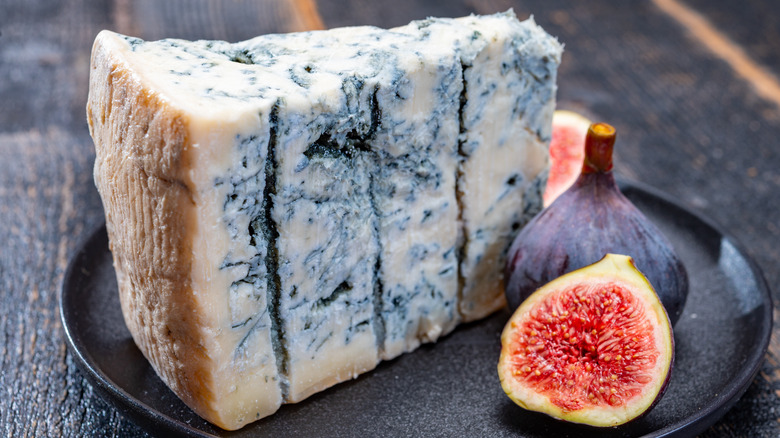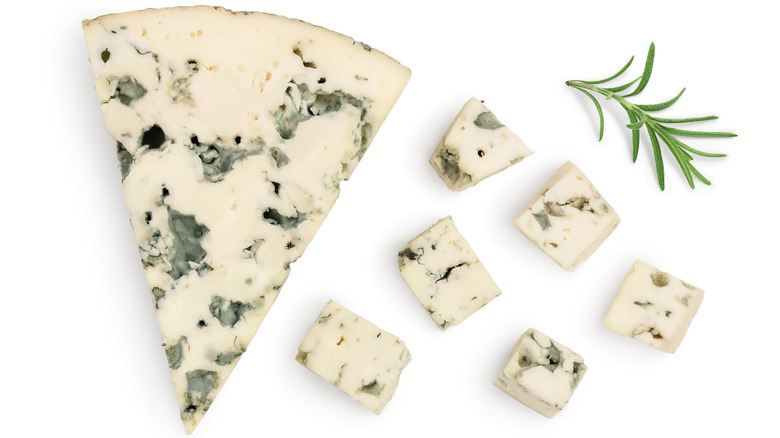How Blue Cheese Was Accidentally Invented
For some, just the thought of blue cheese is enough to cause a loss of appetite. For others, it's hard to imagine a world without the aggressively scented dairy product. Regardless of your stance on the moldy matter, blue cheese is ever-present on restaurant menus and in grocery stores throughout the world, and it's likely not going anywhere soon.
Not often consumed on its own, blue cheese is typically an add-on to another dish, such as in the form of dressing, where it can accompany a salad or serve as a dipping sauce for everything from pizza to buffalo wings. Though some are turned off by its dramatic appearance, blue cheese is actually completely safe to eat. Healthline reports that, while some molds release harmful toxins as they grow, there is no need to worry about this with blue cheese because it is made with Penicillium, a harmless mold that grows on items such as cheese and fruit, per ScienceDirect.
If you've ever wondered how blue cheese came to be, you might be surprised to learn that its invention was reportedly an accident. And blue cheese lovers have one drunk cheesemaker to thank.
Mold is bad for bread, but it's good for cheese
Sometimes the best ideas are the result of a mistake and that appears to be the case with blue cheese. According to Cheese.com, the fortuitous story behind blue cheese involves a drunken, forgetful cheesemaker and a bit of mold. The cheesemaker was reportedly in a cheese cave enjoying a loaf of bread, when, according to rumor, they left the loaf of bread in the cave by accident, where it eventually grew mold. The mold spores then made their way onto the cheese (apparently the two food items were close together), resulting in a new type of moldy cheese.
These days, blue cheese is not made with moldy bread. Rather, it's produced in a controlled environment, where it is cured with Penicillium mold cultures. Healthline also reports that Penicillium grows on bread, seemingly confirming the hypothesis of how blue cheese was accidentally created. Still, it's unclear what exactly prompted the cheesemaker to taste test something that was covered in mold — but we're certainly glad they did.

